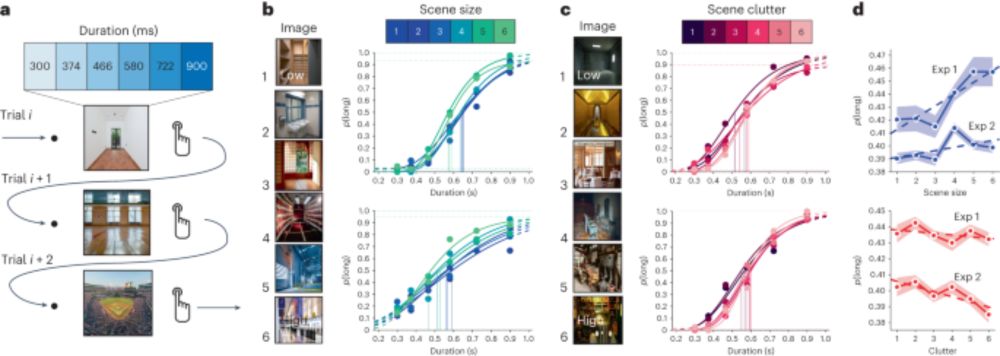
Cognitive Neuroscientist and Associate Professor of Psychology at George Mason University. Perception of Time, Memory, & Action. Exec Director @ http://timingforum.org
Martin Joel Wiener is an American academic and author. He is currently a research professor at Rice University.

Memorability shapes perceived time (and vice versa)
#academicsky #neuroskyence #psychscisky #science
Reposted by Martin Wiener, Nate Breznau

The position is funded as part of the Excellence Cluster "The Adaptive Mind" at @jlugiessen.bsky.social.
Please apply here until Nov 25:
www.uni-giessen.de/de/ueber-uns...
Reposted by Martin Wiener

tl;dr: you can now chat with a brain scan 🧠💬
1/n
I'll be working with the amazing @ayeletlandau.bsky.social and Yuval Benjamini to explore and understand how our sense of time and image memorability are linked. ⌛🧠
We have 2(!) post-doc opportunities available - details coming soon!
If interested, please DM or email me for more information!
Tenure track assistant professor in Psychology at George Mason University, with a focus on cognitive computational neuroscience. Reviews begin October 21st and continue thereafter.
Email me for more questions/inquiries
listings.jobs.gmu.edu/jobs/tenure-...
Altogether, we think this provides evidence that visual time is guided by information content.

ALSO, the effect was moderated by how subjectively meaningful subjects found the stimuli
doi.org/10.1016/j.co...

Here, we found that symbols that contained more edges were dilated. In the attached image, the symbols on the right all seemed to last longer than the ones on the left.
osf.io/preprints/ps...

But, we didn't know WHY they were processed faster
www.nature.com/articles/s41...


We can split these into "high" and "low" levels of vision

Excited to share a new preprint from my lab, with some interesting and surprising results. 🧵 follows
doi.org/10.31234/osf...

Fantastic review by Pawan Sinha and colleagues (@lukasvogelsang.bsky.social @marinv.bsky.social)
doi.org/10.1146/annu...

The relationship between Individual Alpha Frequency and Time Perception: testing the Internal Clock versus the Sampling Rate Hypothesis
www.sciencedirect.com/science/arti...

Intrinsic interval timing, not temporal prediction, underlies ramping dynamics in visual and parietal cortex, during passive behavior
www.biorxiv.org/content/10.1...
Bit hard to summarize it in Bsky (Maybe we can discuss at TRF4, Marc?)
General idea is the insula serves as a kind of "backup" timing system. Sensorimotor stimuli dominate, but in their absence (or unreliability) the insula provides an interoceptive signal
I have my own theory of what the insula is doing for time. Maybe one day I'll get to test it 😇

Effort and Boredom Shape our Experience of Time
*No I didn't. And, surprise! They propose the insula as a link between boredom and perceived duration
www.sciencedirect.com/science/arti...
Reposted by Raúl Pacheco-Vega, Jill A. Jacobson
Official posting coming soon for a tenure track assistant professor job in Psychology at George Mason University. Focus on Computational Cognitive Neuroscience and AI.
I’m chairing the search committee, so DMs and emails welcome.

